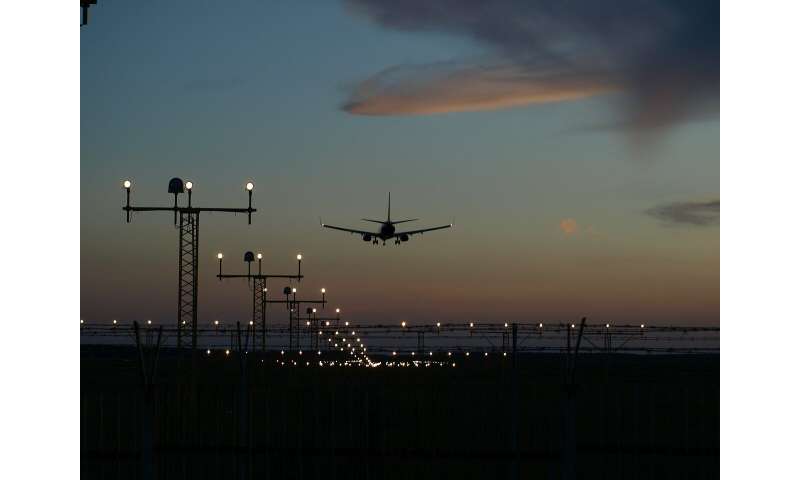Fetal health negatively impacted by airplane noise


The likelihood of having a low birth weight (LBW) baby is increased if the mother lives close to the airport, in the direction of the runway, and is exposed to noise levels over the 55 dB threshold, a new University of Colorado Denver study found. Results come from a study conducted by Laura Argys, Ph.D., professor of economics at CU Denver, and her colleagues, Susan Averett and Muzhe Yang, examining residential neighborhoods impacted by airplane flight patterns from one of the biggest airports in the nation—Newark Liberty International in New Jersey.
Next Generation Air Transportation System (NextGen), a project initiated by the Federal Aviation Administration (FAA), was implemented in a number of airports across the U.S., including Newark Liberty, to save fuel and reduce flight time by utilizing a satellite monitoring system. By shying away from the typical radar system to guide airplanes, NextGen’s satellite technology allowed for an increased number of planes to fly in the air simultaneously—the planes can travel on the same route, closer together, thus minimizing flight duration. The unintended consequence of this satellite technology to improve fuel efficiency and scheduling, however, is that it dramatically increases noise levels and frequency in residential areas in locations right along the flight path.
A 17% increase in risk
By examining unique birth records over a 12-year time period (from 2004 to 2016) and analyzing information on mothers’ home addresses and National Transportation noise data (providing measured noise levels at precise locations), Argys and her team find results that have important implications for infant health. Mothers living near the airport in the runway direction have a 17% greater chance of having a low birth weight baby.
Because the NextGen changes were exempt from public hearings and typical environmental reviews by the US government, residents near Newark airport were caught off-guard by the sharp influx of landing planes. One resident described it as a “constant barrage of airplanes flying over homes,” according to CBS News.
“The National Transportation noise data provided a map that revealed sharp changes in noise exposure in areas near the airport,” says study co-author Muzhe Yang. “We find that NextGen indeed created a narrow band around the runways, which is a noise pollution hotspot.”
Lasting Impact, A Nudge To Policymakers
Argys notes that it is important for researchers to identify circumstances in which changes in noise exposure are outside of the residents’ control.
“These findings are significant because low birth weight can have important health and developmental impacts through childhood that last into adulthood,” says Argys.
Source: Read Full Article




